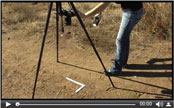|
View in browser: http://www.crime-scene-investigator.net/newsletter/0917.html
|
||
|
SEPTEMBER 2017 | ||
| ||
|
This Month's Featured Resource on the Crime Scene Investigator Network Website
|
||
|
Best Practices For Seizing Electronic Evidence, v.3 U.S. Department of Homeland Security This third edition of the Best Practices for Seizing Electronic Evidence was updated as a project of the United States Secret Service and participating law enforcement agencies. A working group of various law enforcement agencies was convened to identify common issues encountered in today's electronic crime scenes. <View the Pocket Guide> |
||
|
New CSI and Forensic Job Announcements
|
||
|
The most comprehensive listing of Crime Scene Investigation and Forensic To be notified of job openings as they are posted, follow us on Twitter: Job Posting Alerts |
||
|
Crime Scene Analyst
Sarasota County Sheriff's Office, Sarasota, Florida, USA Final Filing Date: September 26, 2017 Perform a variety of duties that will include, but not limited to, collection, preservation, and evaluation of biologic items of evidence or potential evidence, collect and preserve prints and impressions of or from various sources, collect and preserve other evidence and property. <View complete job listing> |
||
|
Part Time Forensic Specialist I
Anaheim Police Department, Anaheim, California, USA Final Filing Date: September 26, 2017 This is a part-time position averaging 30 hours per week. Conducts crime scene investigations to recognize, search for, document, develop, enhance, collect and preserve all types of evidence. Records physical or trace evidence through such techniques as macro, micro, infrared, and ultraviolet photography and the use of alternate light sources. <View complete job listing> |
||
|
Forensic Scientist Trainee - Controlled Substances
Las Vegas Metropolitan Police Department, Las Vegas, Nevada, USA Final Filing Date: September 27, 2017 Incumbents receive supervised training in the scientific laboratory examination and analysis of physical evidence and in the scientific interpretation of test results. <View complete job listing> |
||
 |
||
|
Criminalist I - IV
Sacramento County District Attorney, Sacramento, California, USA Final Filing Date: October 3, 2017 Criminalists conduct forensic laboratory analyses of physical evidence, investigate crime scenes, and testify in court as an expert witness on the subjects of forensic analyses and crime scene investigation. <View complete job listing> |
||
|
Latent Fingerprint Examiner
Hennepin County Sheriff's Office, Minneapolis, Minnesota, USA Final Filing Date: September 28, 2017 The Hennepin County Sheriff's Office (HCSO) is currently seeking to fill two Latent Fingerprint Examiner positions. One position is full-time benefit earning and the second is a part-time benefit earning position. <View complete job listing> |
||
|
Evidence Technician I
Anchorage Police Department, Anchorage, Alaska, USA Final Filing Date: September 25, 2017 Accesses secured lockers in evidence warehouse environment and responds to scenes of active criminal investigations to retrieve evidence. Ensures property and evidence is accompanied with accurate report including chain-of-custody. <View complete job listing> |
||
|
Search for more job listings in Crime Scene Investigations and Forensics To be notified of job openings as they are posted, follow us on Twitter: Job Posting Alerts |
||
|
Featured Video Presentation
|
||
|
Learn the basic technique for photographing footwear impressions. |
||
|
Other Resources on the Crime Scene Investigator Network Website
|
||
|
Crime Scene Investigator mdash; Blog
Crime Scene Investigator Forum How to Become a Crime Scene Investigator Crime Scene Response Evidence Collection Crime Scene and Evidence Photography Crime Scene Investigation Articles Video Presentations Training and Colleges Employment Bookstore Resources and Links |
||
|
Not Subscribed to this Newsletter?
|
||
|
If you are not subscribed to this newsletter, you may subscribe with this link: SUBSCRIBE via email |
||
|
To Unsubscribe
|
||
|
To unsubscribe from future e-mail newsletters, please click here: UNSUBSCRIBE Copyright ©2017 Crime Scene Resources, Inc. Crime Scene Investigator Network |



